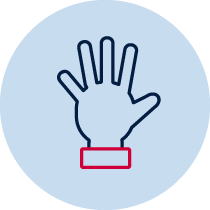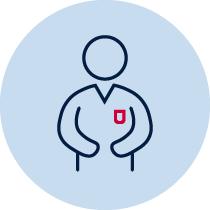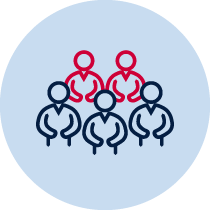Chance – Highly likely
Students identify outcomes of familiar events involving chance and describe them using everyday language such as “will happen”, ‘won’t happen” or ‘might happen’.
 |
 |
 |
 |
 |
| Practical | Resource required | Take photo | Individual | Whole class |
Statistics and probability – Chance 1
- Recognises and describes the element of chance in everyday events MA1-18SP
- describes mathematical situations and methods using every day and some mathematical language, actions, materials, diagrams and symbols MA1-1WM
- supports conclusions by explaining or demonstrating how answers were obtained MA1-3WM
Content
Identify outcomes of familiar events involving chance and describe them using everyday language such as “will happen”, ‘won’t happen” or ‘might happen’ (ACMSP024)
National Numeracy Learning Progression Mapping to the NSW mathematics syllabus
When working towards the outcome MA1‑18SP the sub-elements (and levels) of Understanding chance (UnC1-UnC2) describe observable behaviours that can aid teachers in making evidence-based decisions about student development and future learning.
Materials
Teacher instructions
The purpose of this task is to gauge students’ understanding of probability concepts such as
- recognising the element of chance in everyday life
- the language of chance.
Students are required to sort the event cards into groups according to the likelihood of the event occurring. Students are given chance cards (‘will happen’ and ‘won’t happen’) along with the event cards. For students who cannot read, the teacher will need to read out the event cards to them. Choose the chance cards that each begin with a different grapheme for non-readers to make it easier for them to visually distinguish the categories (for example ‘won’t happen’, ‘might happen’). You may have to ask them their response and show them where to place the card.
Variation – This can be played as a four corners game. A chance card is placed on each of the 4 corners of the room. The teacher reads out an event from the event cards and students must go to the corner with the most appropriate chance card. Teachers can formatively assess students understanding of the language of chance.
Extension – Students explain why one event is less likely to occur than another. Students may be given cards with ‘certain’, uncertain’, ‘possible’ impossible’, likely’ ‘unlikely’.
Teachers record student responses by taking pictures of their grouping. During the task ask probing questions to discuss why students have come to the conclusions they have. Record observations.
Suggested questions
- Why do you think this is impossible?
- Has this happened before?
- Is this something you expect will happen?
- What do you know that makes you believe this might happen?
- Why are you certain about this?
- How do you know this will not happen?
Student instructions
You have chance cards with words that say if something will happen, won’t happen or might happen. Place these cards in front of you. Now pick up an event card from the pile in the middle and read what it says. Is it something that ‘might happen’, ‘will happen’ or ‘won’t happen’? Place the event card with the correct chance card.
Possible areas for further exploration?
- Student understanding of the language of chance.
- Students may randomly pick a chance card without understanding the event.
Where to next?
Students are to explain why one result is more likely than another.
Students can draw or write events that are ‘likely’ and ‘unlikely’.
Students brainstorm a list of possible people who they could meet today, for example, the principal, a teacher, a primary child, an uncle, an aunt, a mother, a father, a grandmother, a grandfather, the postman, or a policeman. Students write the names on cards. As a class, students discuss and place the name cards in the order from ‘least likely to meet’ to ‘most likely to meet’.
Syllabus
Please note:
Syllabus outcomes and content descriptors from Mathematics K-10 Syllabus © NSW Education Standards Authority (NESA) for and on behalf of the Crown in right of the State of New South Wales, 2012